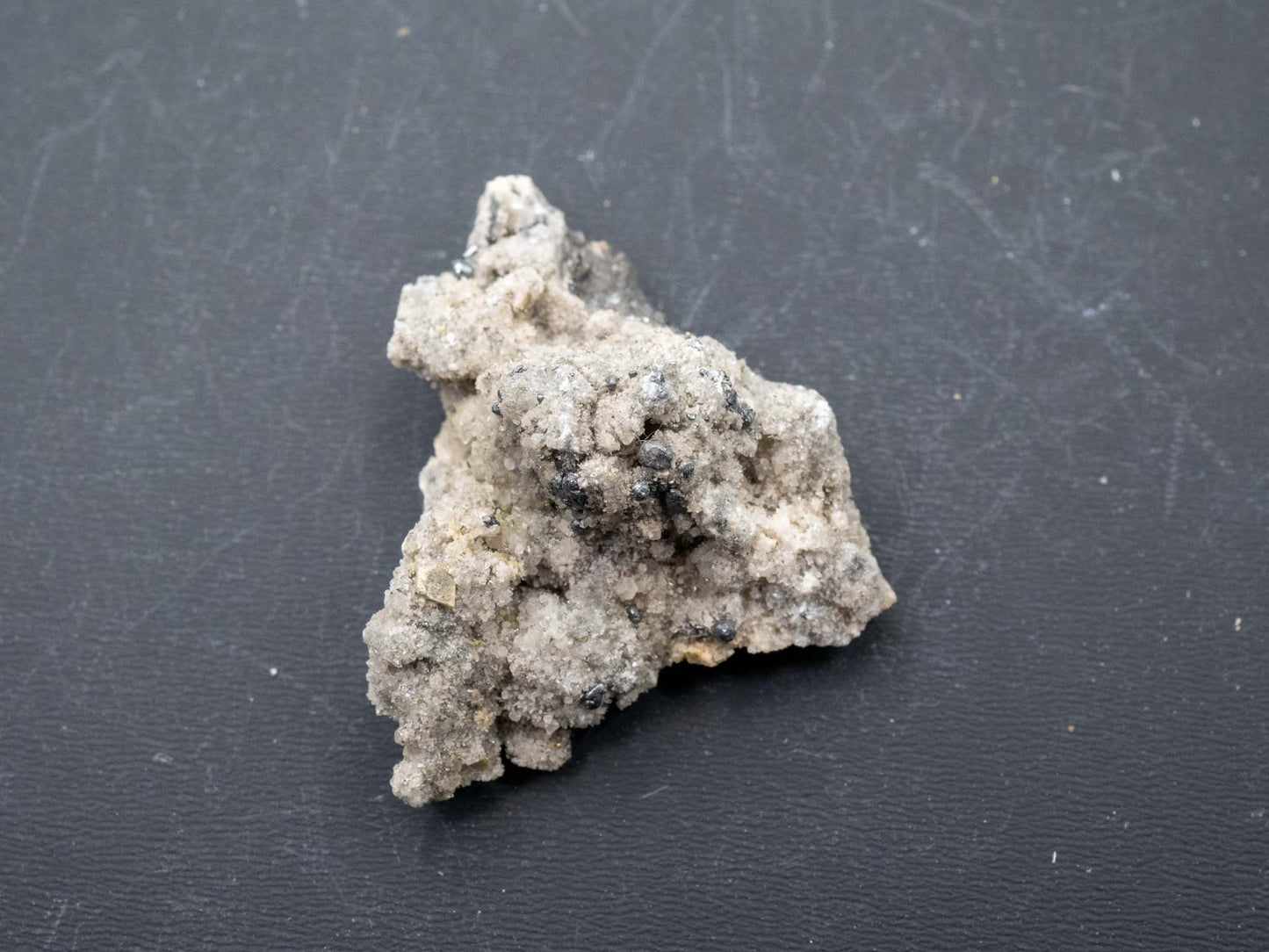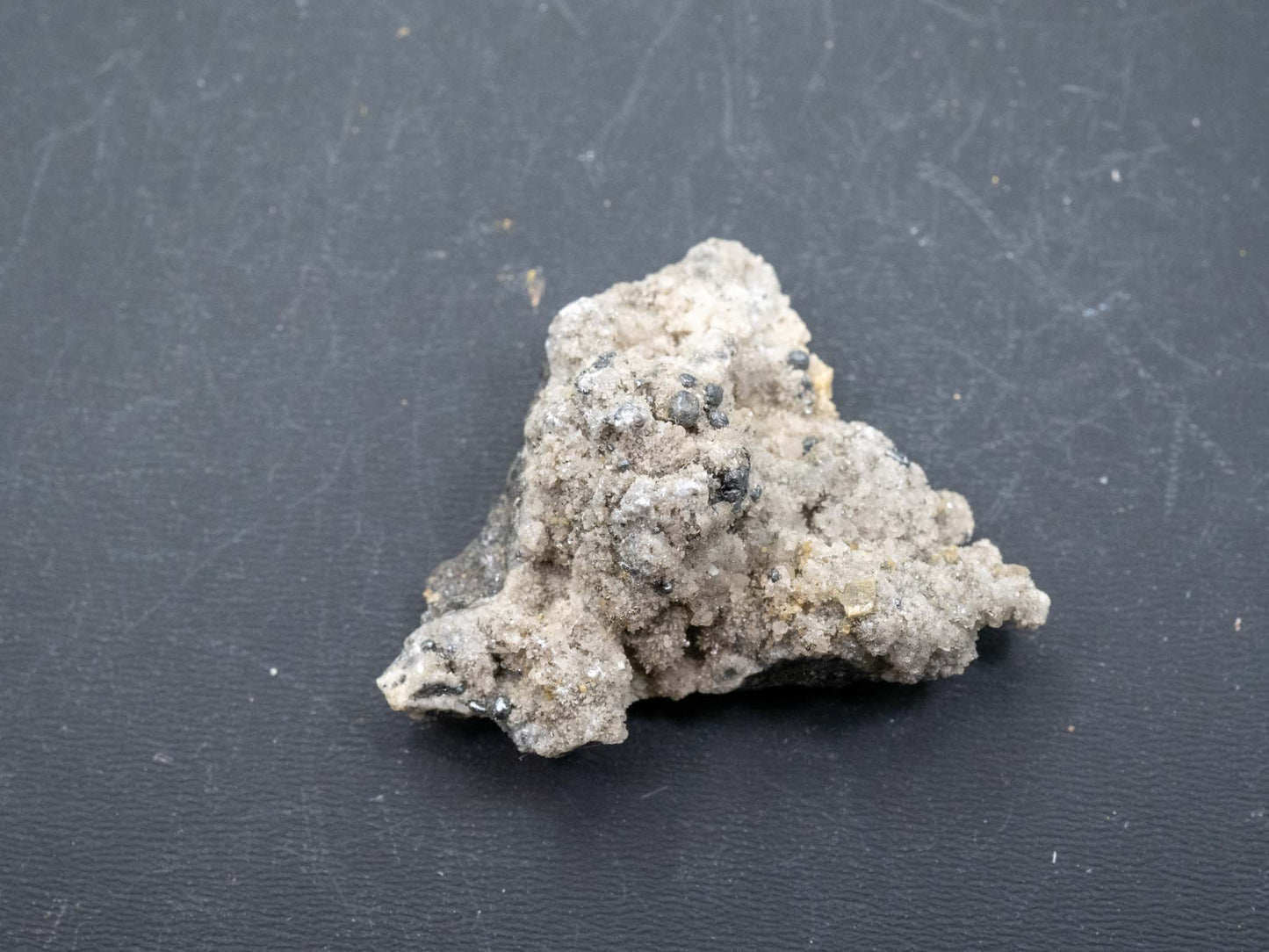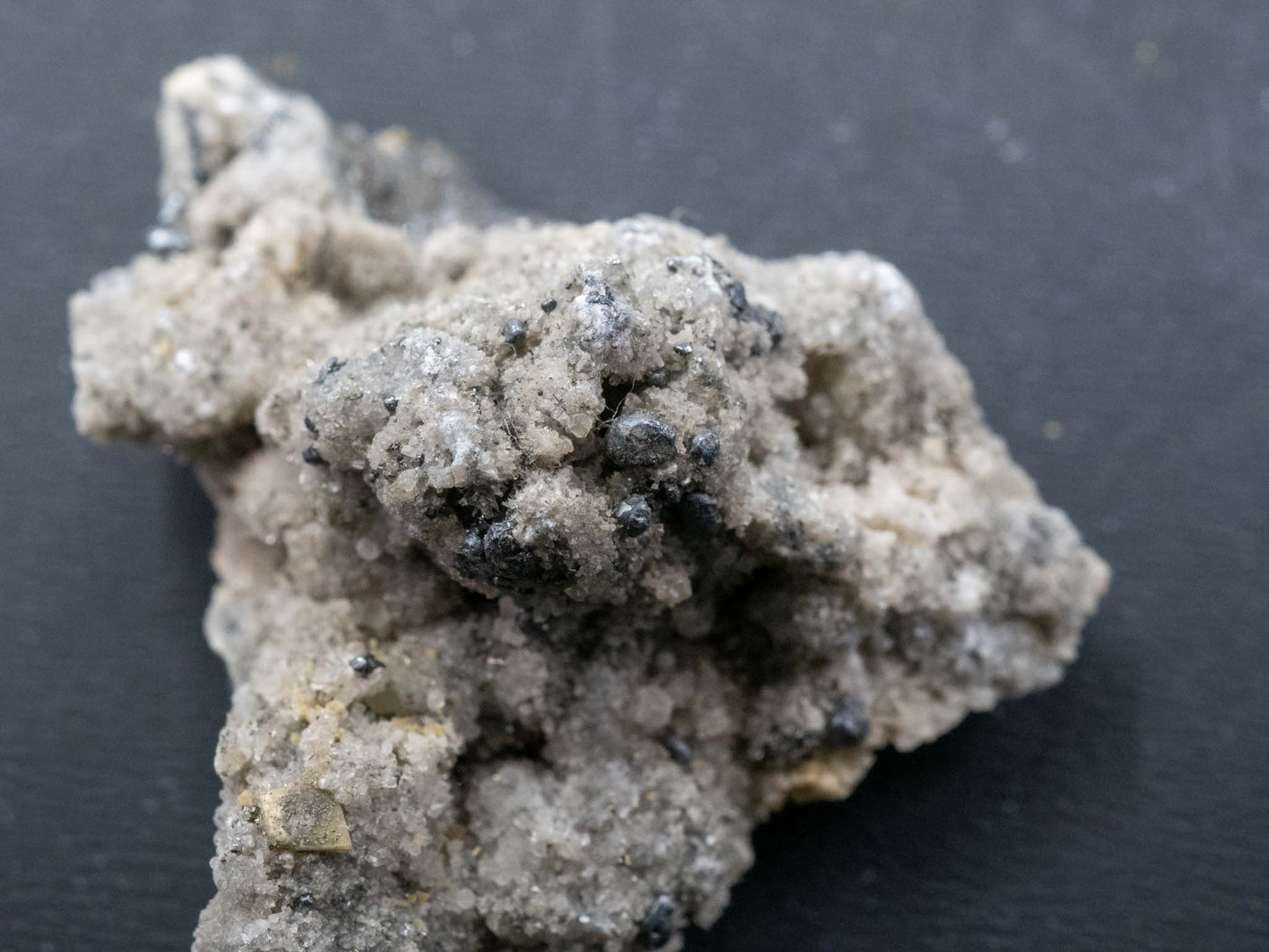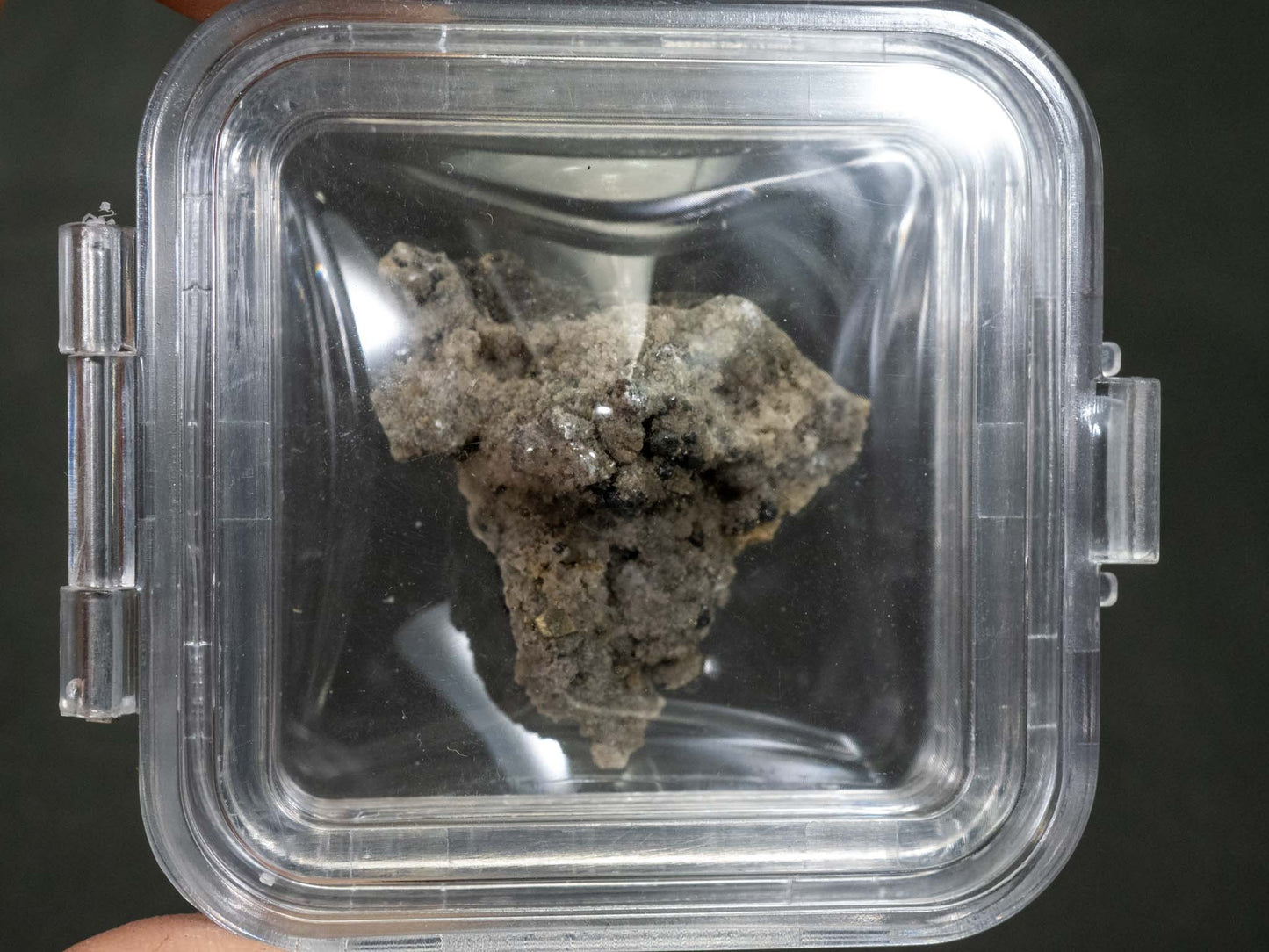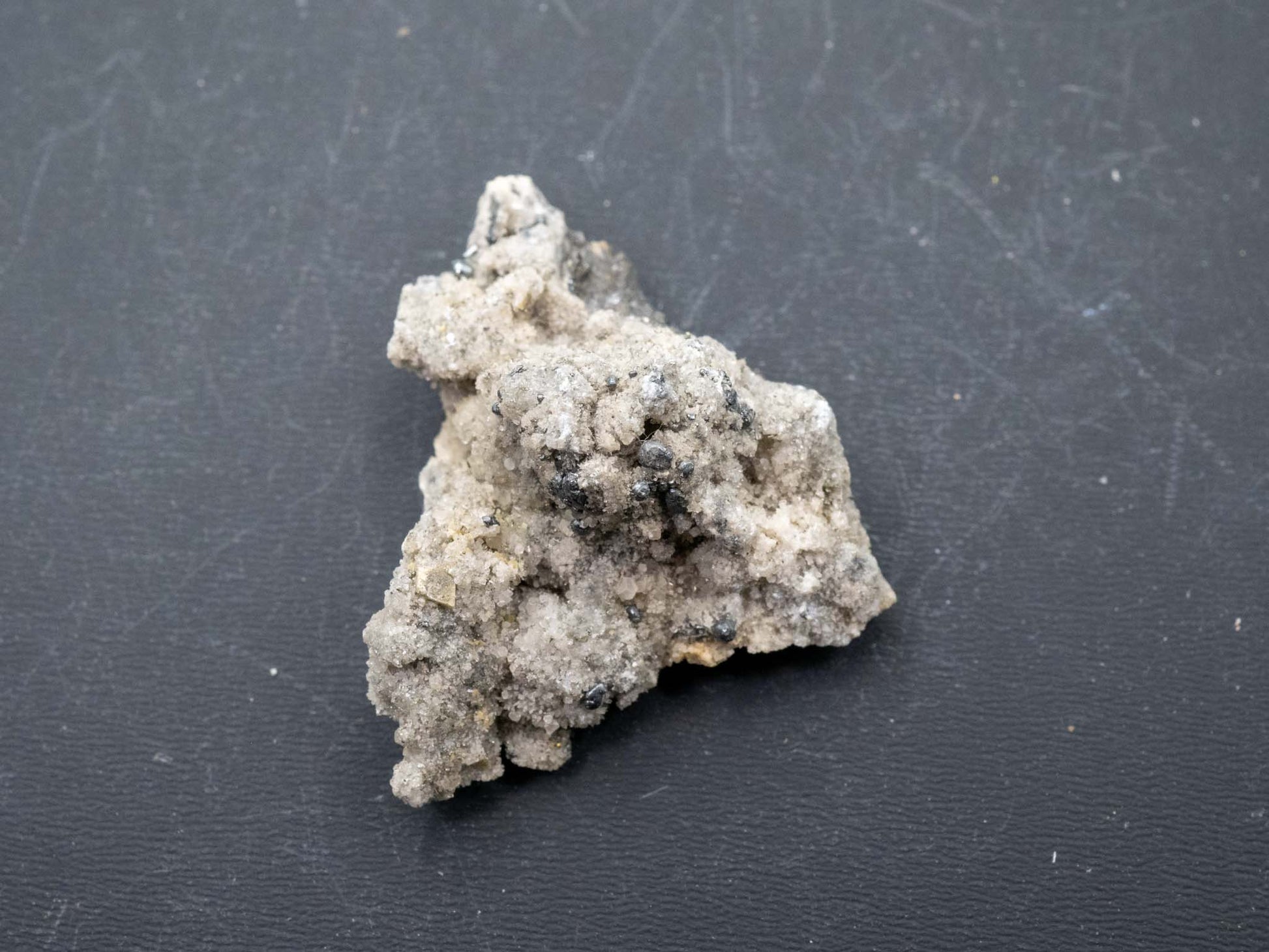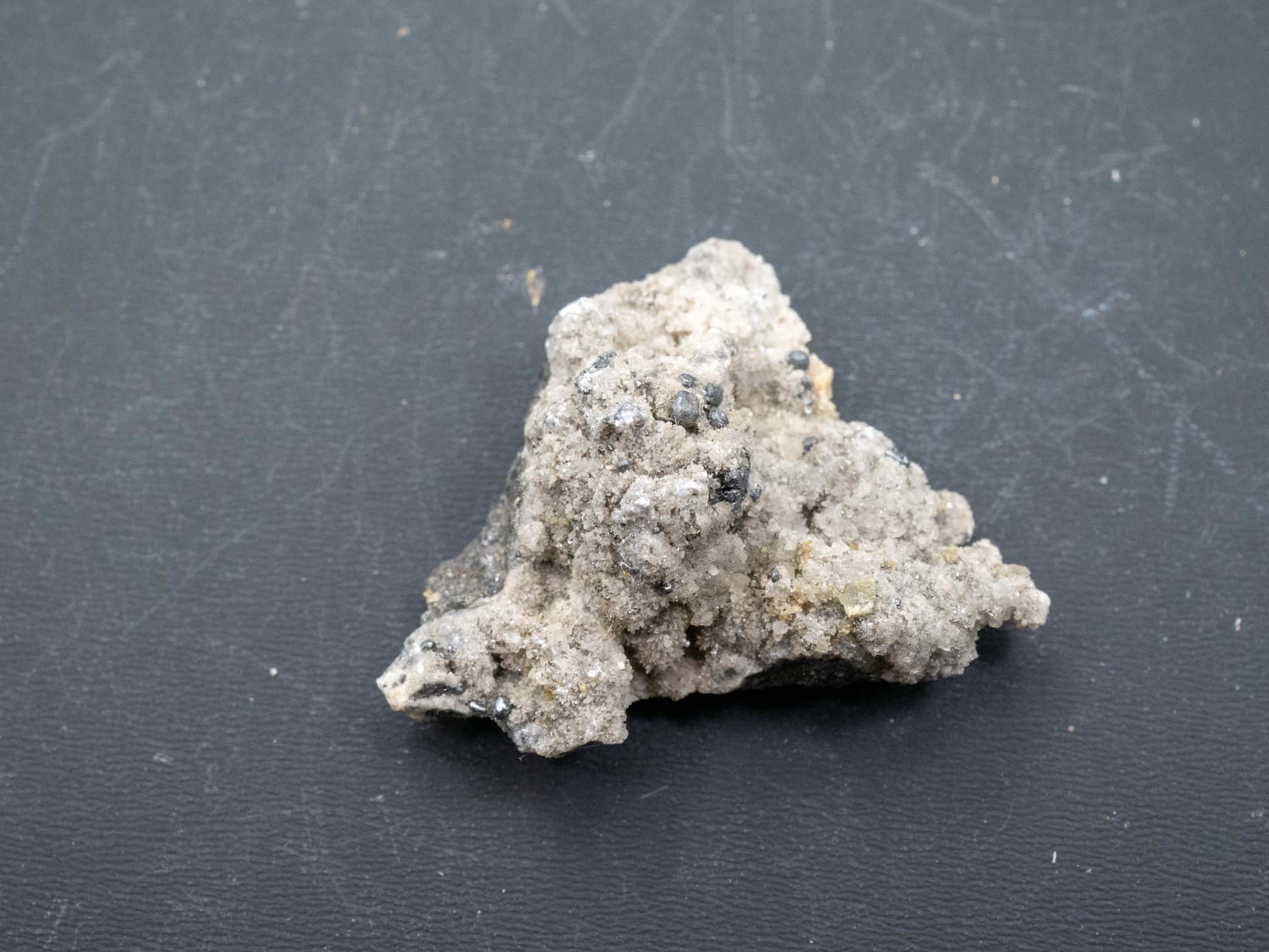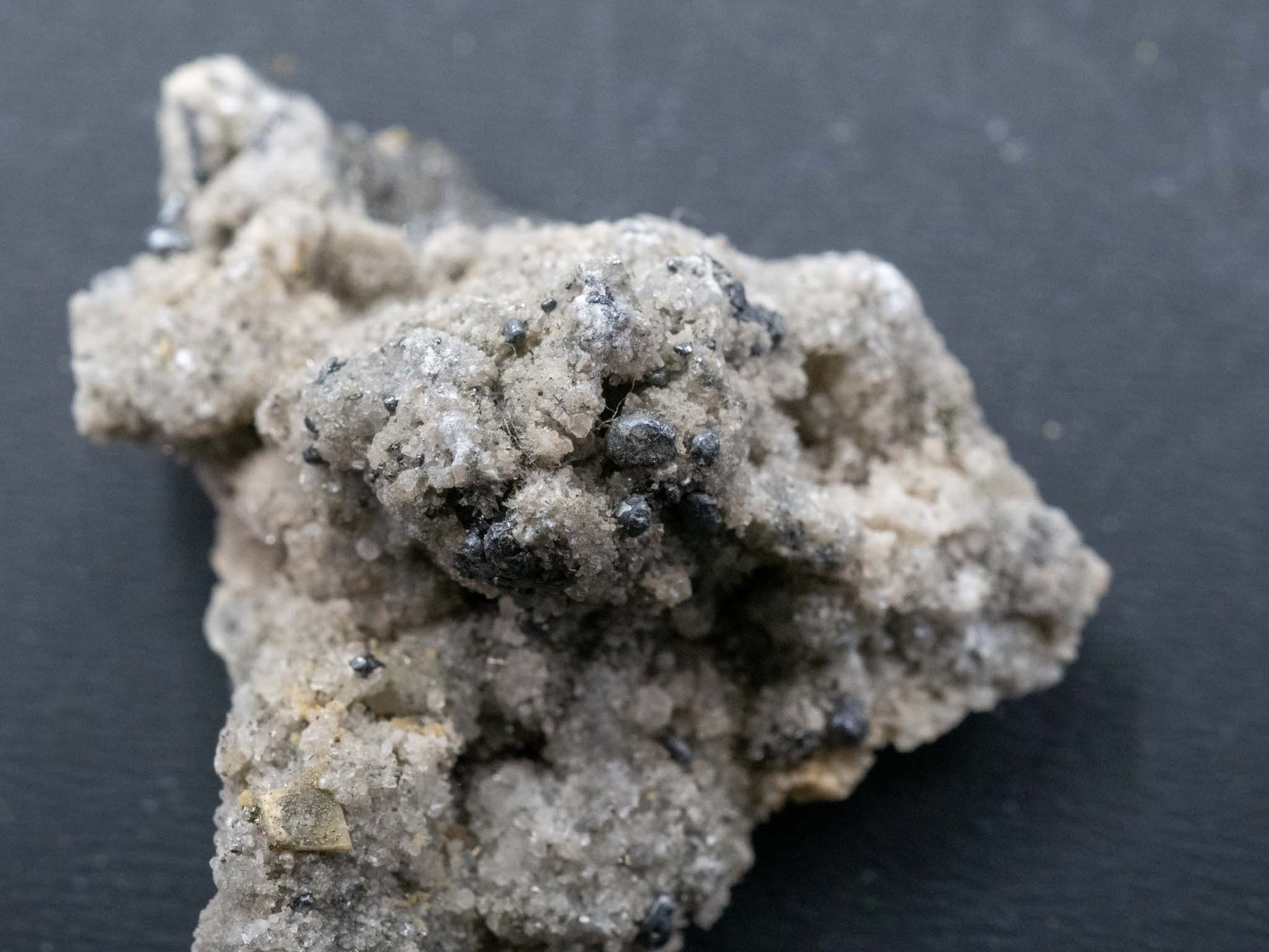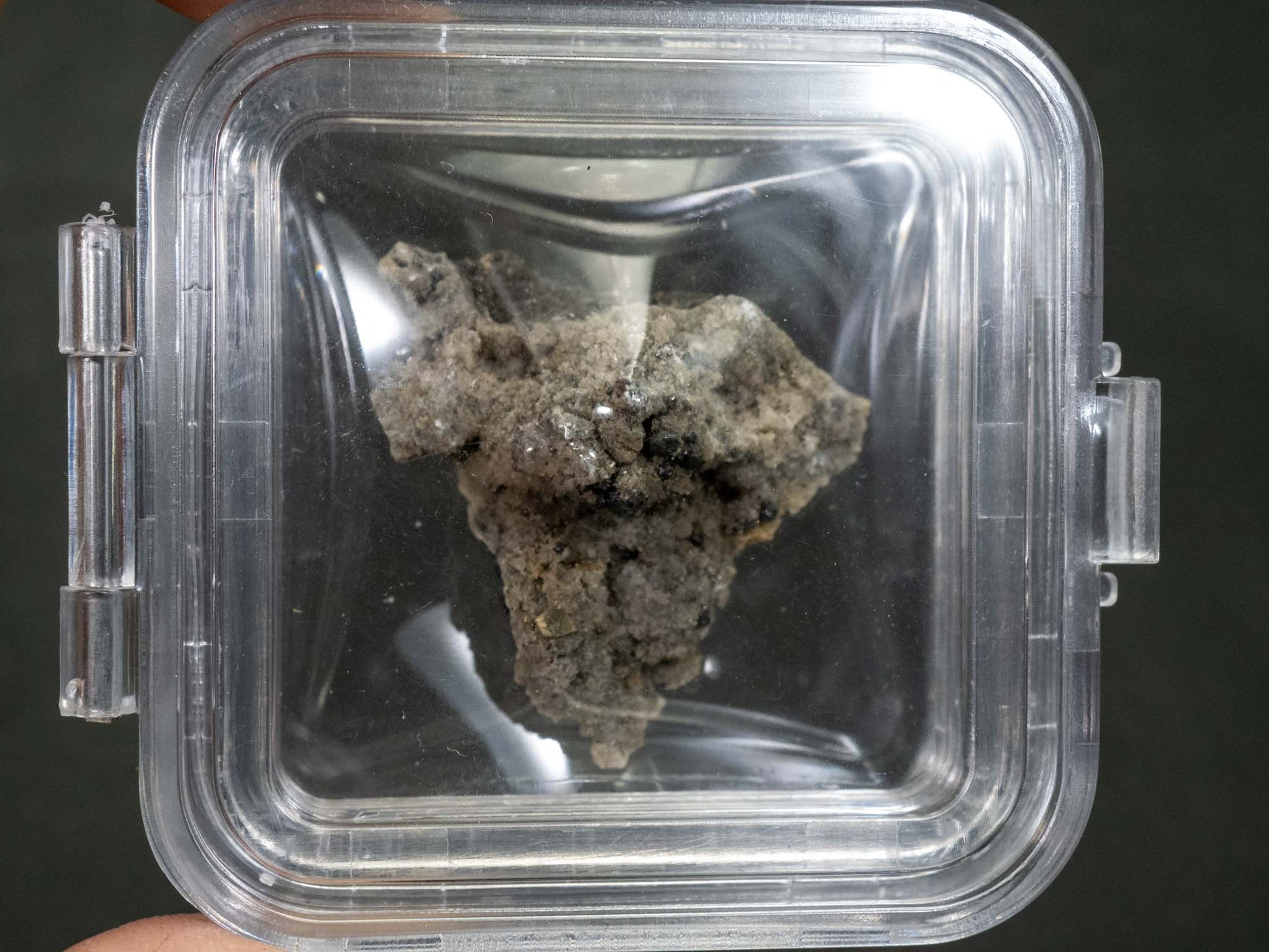Rad Man Minerals
Acanthite psd. Argentite - Echo Bay Mine, Port Radium, Northwest Territories, Canada
Acanthite psd. Argentite - Echo Bay Mine, Port Radium, Northwest Territories, Canada
Couldn't load pickup availability
Acanthite pseudomorphing argentite is a fascinating mineralogical occurrence where acanthite, the stable low-temperature form of silver sulfide (Ag₂S), replaces argentite, the high-temperature form of the same compound, while retaining its original crystal habit. This transformation typically occurs as argentite cools below 173°C, preserving its distinct cubic or pseudo-cubic crystal shapes, now composed of acanthite. At the Echo Bay Mine, a renowned locality in Canada’s Northwest Territories, acanthite pseudomorphs are particularly prized for their sharp, well-defined crystals that often display intricate intergrowths and metallic luster. These specimens, frequently embedded in a quartz or calcite matrix, highlight the complex thermal and chemical conditions of the deposit.
The Echo Bay Mine, historically a significant producer of silver, is located within the prolific Great Bear Lake mineral district, known for its high-grade silver and associated minerals. The formation of acanthite pseudomorphs at this locality reflects the interplay between hydrothermal fluids and a cooling geological environment. As argentite crystallized at elevated temperatures, subsequent cooling facilitated the transformation into acanthite while preserving its original morphology. These specimens are not only visually striking but also valuable for understanding mineral stability, paragenesis, and the evolution of hydrothermal silver deposits in this historically significant mining region.
Approx. specimen size: 35mm x 25mm x 15mm
